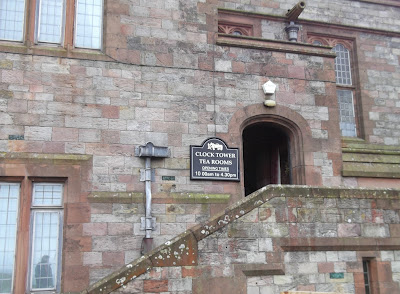This is not a rant. I state this right here, up front, so
that I can refer back to it if I forget.
A gentleman on the radio this morning was waxing positive
about how technology has speeded everything up, and how much better our lives
are as a result. He may be correct. If he was on the radio, then it’s bound to
be true, isn’t it?
I have expressed concerns here before about the risks to
mental health and society if the entire population has too much information,
most of it distorted by marketing and vested interests, too little imagination
and judgement to make use of that information, and a compulsion to multitask
between trivial, inconsequential, purely transactional exchanges. That was
beginning to sound a bit rantish, so I’ll stop that paragraph.
The world according to my desktop is not getting faster. It
is continuing to slow down. As I have mentioned before, I live out in the
countryside, and my broadband is slow. This means that most of the cyber world
is now specifically designed not to work properly for people like me. The
charming little lady illustrated here is someone I see a great deal of. Since
my internet provider is BT (British Telecom), and since they are sort of poor
relations within the Yahoo edifice, I am unable to open any page in my email
service until I have been provided with an advert for an American charity –
they even have 800 toll-free numbers, which of course are meaningless outside
the US .
I can’t switch this feature off, and the ads take on average about 22.46
seconds a time to retrieve from some remote server. Every single mail item,
every index page – everything – has to wait for an ad which I’ve seen before
and is of no relevance. You can see that would begin to grate after a while.
As I type my mail, the browser is constantly jamming the
buffer, trying to check what I am saying, so that it can target advertising at
me which is relevant to what I’m writing about. I constantly have to retype
bits where it got stuck, or where it dropped characters while it was
distracted. I’ve started using WordPad to type my bigger mails, and pasting
them into the browser – I hope the text interpreter gets very serious
indigestion as a result of not being able to chew its food properly.
As I type anything into the input field for a search engine,
the poor thing has a brave attempt to predict what I’m going to type, but
always gets it wrong, since the time taken to realise that I am typing in the
search field and call HQ results in its losing the 2nd to 5th
characters – so its predictions are not worth the effort. Not helpful.
Well, I’m fighting back. We realised that, despite
everything, my wife’s new laptop works much faster than my desktop does when it’s
online, so we deduce that more modern designs cope better with all this
friction and superfluous junk. I shall buy a new desktop machine next week, and
set about the (estimated) 3 month project of transferring software and
documents from the old one. I shall, however, keep the old computer – it is still
of a high spec, although it is coming up for 7 years old now, and the processor
and video components are fast and efficient, if left to themselves and not
constantly interrupted.
I intend to strip back the old machine – remove Internet
access, take off the virus checker – XP will no longer be supported very soon
so a static OS should be OK. I shall remove everything I don’t need to be on it.
Goodbye Google Toolbar. Goodbye RealPlayer. Goodbye DropBox. Goodbye Spotify. I shall use it for typing, and
utility jobs like writing CDs, graphic and photographic work and desktop
publishing. When I need to move files between the machines, I shall use USB memory
sticks. The computers will share a printer, but it will be hard-wired so that
there is no need for WiFi.
I can sense the beginnings of a smile playing around the
corners of my mouth. With luck, my future sightings of the little Unicef girl
will be instantaneous, since my new computer will be designed to cope with her
as part of the mail service.
The broadband will still be slow, though.
Maybe it won’t work any
better.
Hmmm.













































